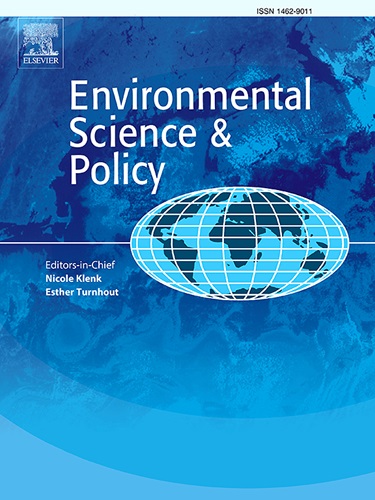Unpacking the success among water quality collaborative governance efforts in the United States
IF 4.9
2区 环境科学与生态学
Q1 ENVIRONMENTAL SCIENCES
引用次数: 0
Abstract
Water quality is worsening in many parts of the world and traditional governance approaches have done little to ameliorate this trend. Collaborative governance (CG) shows promise for the potential to improve water quality. However, we do not understand fully what aspects of collaborative governance contribute to water quality improvement and under what conditions. To begin to address this gap, we conducted a systematic literature review to identify and then code fifty-six collaborative water quality governance cases across the US. Results indicate that motivations and goals for CG explain water quality improvement, when CG is government-led. However, results also suggest that water quality improvement is not always possible despite sound CG approaches. Instead, CG may achieve other intermediate outcomes such as reduced conflict, actionable knowledge production, or broadened networks. But factors associated with these outcomes differ suggesting there may be trade-offs in orienting CG towards water quality improvement or towards a different outcome of interest. We conclude that there is no "one-size-fits-all" for collaborative governance; rather, CG must be carefully designed to align with the desired outcomes and impacts.
剖析美国水质协同治理工作的成功之处
世界上许多地方的水质正在恶化,而传统的治理方法对改善这一趋势收效甚微。协同治理(CG)显示出改善水质的潜力。然而,我们并不完全了解协作治理的哪些方面有助于改善水质,以及在什么条件下有助于改善水质。为了开始解决这一差距,我们进行了系统的文献综述,以确定并编码全美56个合作水质治理案例。结果表明,在政府主导下,企业治理的动机和目标解释了水质改善。然而,结果也表明,尽管有良好的CG方法,水质改善并不总是可能的。相反,CG可以实现其他中间结果,如减少冲突、可操作的知识生产或扩大网络。但是,与这些结果相关的因素各不相同,这表明将CG导向水质改善或朝向不同的兴趣结果可能存在权衡。我们得出结论,协作治理没有“放之四海而皆准”的方法;相反,必须仔细设计CG,使其与期望的结果和影响保持一致。
本文章由计算机程序翻译,如有差异,请以英文原文为准。
求助全文
约1分钟内获得全文
求助全文
来源期刊

Environmental Science & Policy
环境科学-环境科学
CiteScore
10.90
自引率
8.30%
发文量
332
审稿时长
68 days
期刊介绍:
Environmental Science & Policy promotes communication among government, business and industry, academia, and non-governmental organisations who are instrumental in the solution of environmental problems. It also seeks to advance interdisciplinary research of policy relevance on environmental issues such as climate change, biodiversity, environmental pollution and wastes, renewable and non-renewable natural resources, sustainability, and the interactions among these issues. The journal emphasises the linkages between these environmental issues and social and economic issues such as production, transport, consumption, growth, demographic changes, well-being, and health. However, the subject coverage will not be restricted to these issues and the introduction of new dimensions will be encouraged.
 求助内容:
求助内容: 应助结果提醒方式:
应助结果提醒方式:


